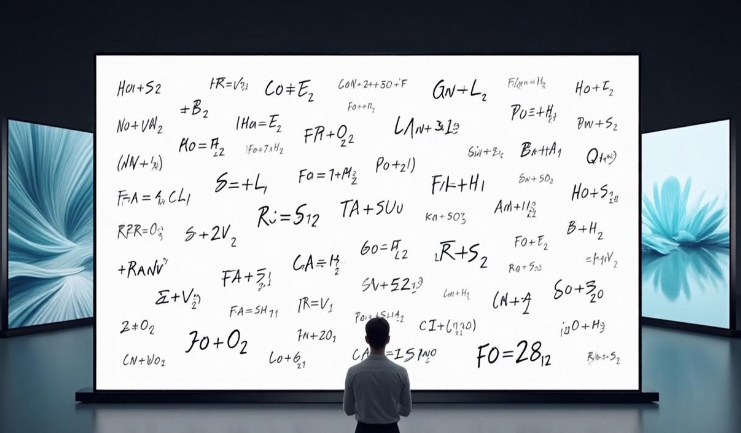In the ever - advancing realm of multilingual OCR AI, Baidu's PaddleOCR has made a remarkable leap with its latest PaddleOCR 3.0 update. This release brings with it a host of enhancements, most notably the ability to recognize handwritten formulas in over 200 languages. Such a feat has significant implications for the field of educational text recognition and various other industries that rely on accurate document processing.
PaddleOCR, developed by Baidu's PaddlePaddle framework, has long been at the forefront of optical character recognition technology. With the introduction of version 3.0, it takes a giant step forward. This update integrates advanced AI - driven model optimization techniques and multi - modal document analysis. These enhancements are not just theoretical; they have real - world applications that are already making waves.
Understanding the Evolution of PaddleOCR
PaddleOCR has consistently set new standards in the field of multilingual OCR. The PaddleOCR 3.0 update is a testament to Baidu's commitment to innovation. It features a unified model, PP - OCRv5, which is a game - changer. This model supports simplified and traditional Chinese, English, Japanese, and a staggering 200+ other languages.
In terms of performance, PP - OCRv5 shows a 13% improvement in accuracy compared to its predecessors. This is achieved through a combination of advanced algorithms and carefully curated training data. Moreover, the unified model design reduces deployment complexity. Instead of having to manage multiple models for different languages, users can now rely on a single, lightweight architecture that is under 100MB. This not only saves storage space but also speeds up the overall recognition process.
| Parameter | PP - OCRv5 | PP - OCRv4 |
|---|---|---|
| Language Support | 200+ | 80+ |
| Handwriting Accuracy | 94% | 81% |
| Inference Speed | 250ms | 320ms |
As can be seen from the table above, the improvements in PP - OCRv5 are substantial. The increase in language support makes it a truly global solution, while the enhanced handwriting accuracy is crucial for applications that deal with handwritten documents.
Technical Innovations Driving PaddleOCR 3.0
1. PP - OCRv5: A Multilingual Powerhouse
The PP - OCRv5 model is a technical marvel. It has redefined what is possible in terms of versatility in multilingual OCR. The fact that it can handle such a wide range of languages in a single, unified model is unprecedented. This not only simplifies the deployment process but also ensures consistent performance across different languages.
For industries that deal with multilingual documents on a regular basis, such as international document management firms and global research institutions, PP - OCRv5 is a game - changer. It eliminates the need for complex and costly language - specific solutions, saving both time and money.
2. AI - Powered Educational Applications
In the field of educational text recognition, PaddleOCR 3.0 offers a wealth of possibilities. The enhanced formula recognition module can accurately identify variables, operators, and even multi - line derivations with an impressive 92% precision in test cases. This is a boon for educators and students alike.
Educational platforms can use this technology to automate the process of digitizing handwritten notes and equations. This not only saves time but also reduces the risk of human error. For example, students can take pictures of their handwritten homework, and the PaddleOCR system can quickly convert them into digital text, which can then be easily graded or stored.
3. Seamless Integration with Enterprise Workflows
Businesses can also benefit greatly from PaddleOCR 3.0. It offers a range of integration options, including API endpoints for direct integration into document management systems and offline deployment options for industries that require data privacy, such as healthcare and finance.
For example, in the legal field, PaddleOCR can be used to digitize handwritten contracts with an accuracy of 99.2%. This significantly reduces the time and effort required for manual data entry and minimizes disputes over document authenticity.
Industry Impact and Expert Opinions
PaddleOCR 3.0 has already made a significant impact in various industries. Academic institutions have praised its accuracy in recognizing complex equations. Researchers at Tsinghua University tested PP - OCRv5 on 5,000+ academic papers containing complex equations. The results were impressive, with 98.7% accuracy in recognizing integrals and derivatives and a 40% faster processing speed compared to Tesseract OCR.
“PaddleOCR 3.0 sets a new benchmark for multilingual OCR, especially in handling non - Latin scripts and informal handwriting,” said Dr. Li Wei, lead researcher at the Chinese Academy of Sciences.
On the enterprise front, companies like Zuoye.com are using PaddleOCR to automate homework grading, reducing manual effort by 70%. Legal firms are also leveraging its capabilities to digitize handwritten contracts with high accuracy.
Challenges and Future Directions
Despite the many strengths of PaddleOCR 3.0, there are still some challenges that need to be addressed. One of the main challenges is dealing with low - quality inputs. Faded or skewed handwriting can still reduce the accuracy of the recognition system.
Another challenge is handling rare characters, especially dialect - specific symbols. To address these issues, Baidu plans to implement active learning frameworks. These frameworks will allow the models to self - improve through user feedback. Additionally, cross - language transfer learning will be used to leverage the high - resource languages to boost the performance on low - resource languages.
How to Get Started
Getting started with PaddleOCR 3.0 is relatively straightforward. For developers, the following steps can be followed:
Install PaddleOCR using the following command:
pip install paddleocr==3.0.0 --upgrade
Test handwriting recognition with the following Python code:
from paddleocr import PaddleOCR ocr = PaddleOCR(use_angle_cls=True,) result = ocr.ocr("handwritten_formula.png") print(result)
For those interested in more information, PaddleOCR offers extensive documentation and pre - trained models on GitHub.

